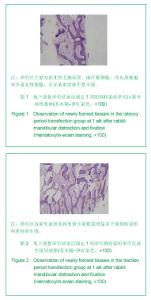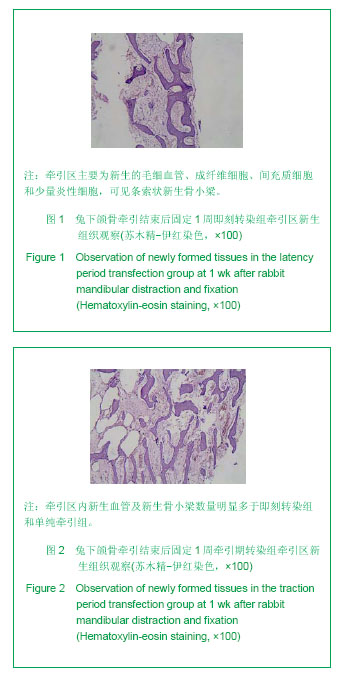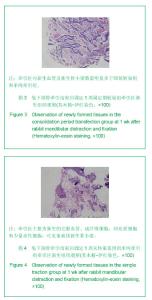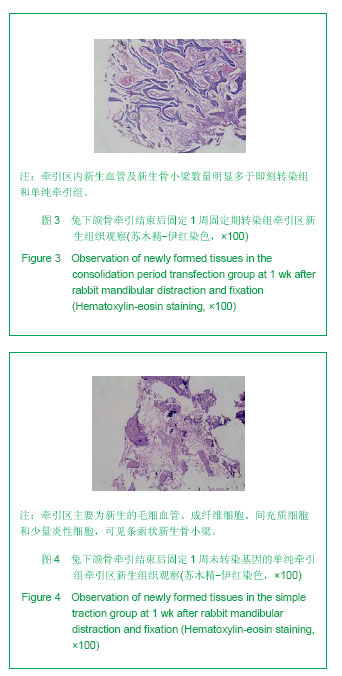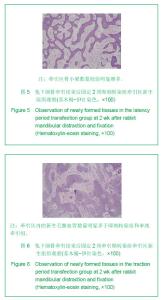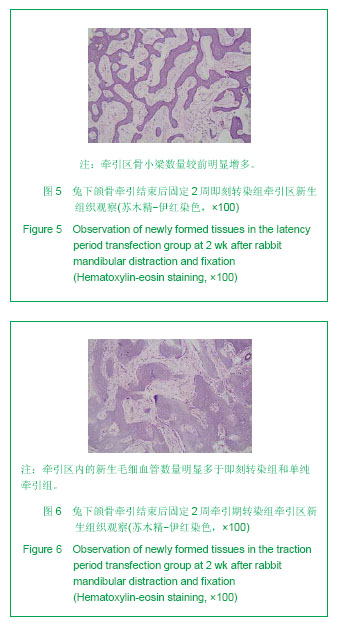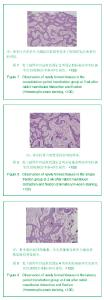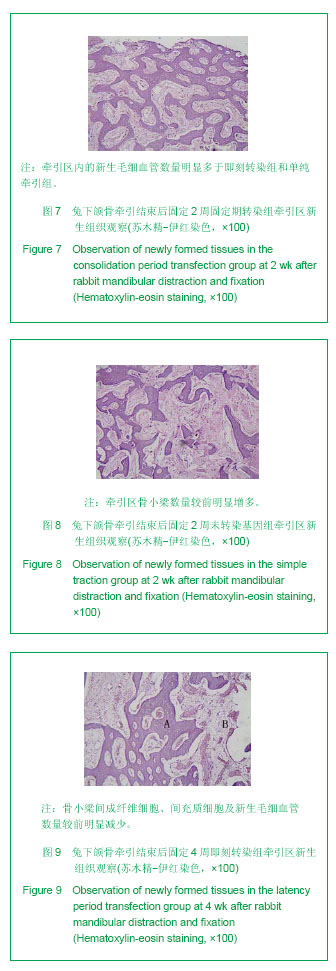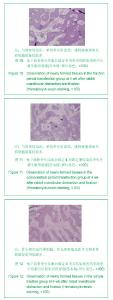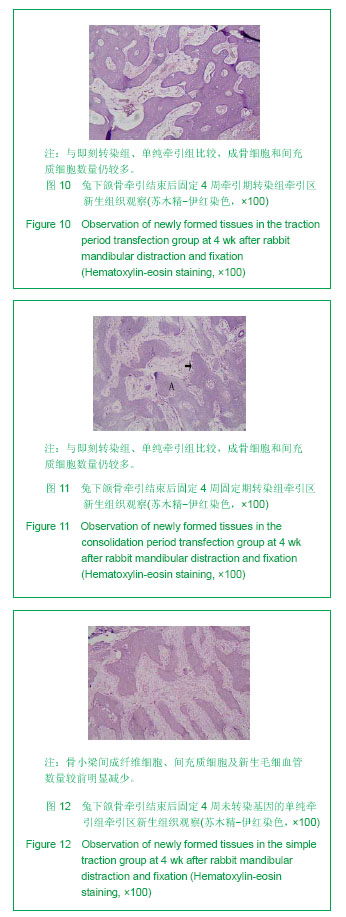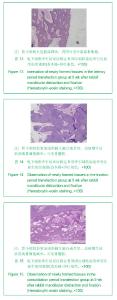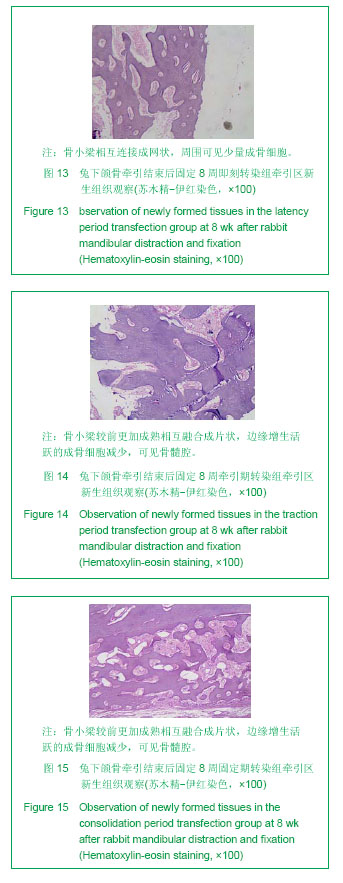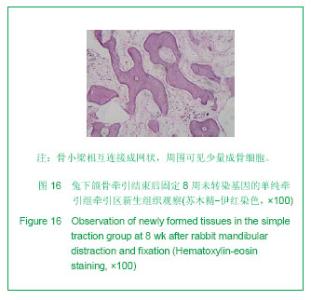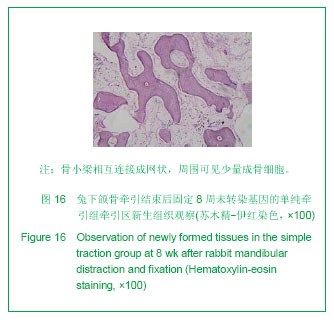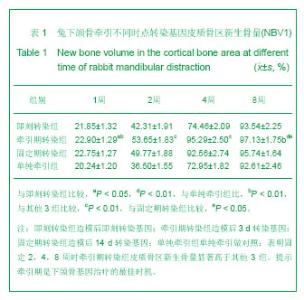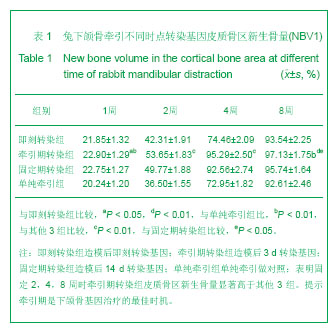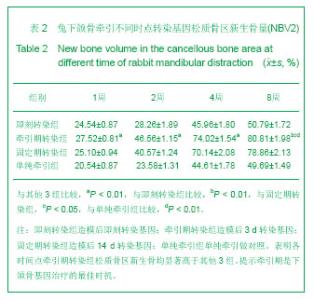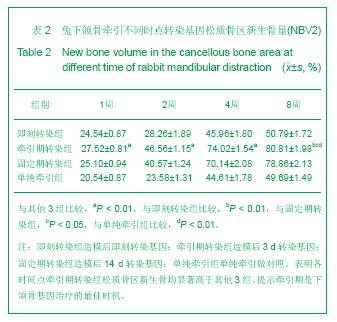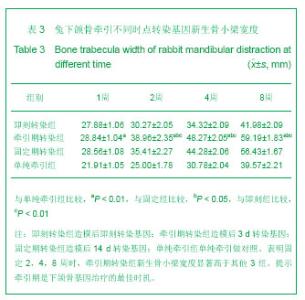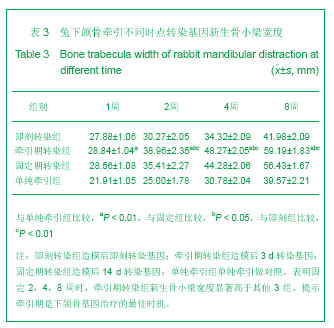| [1] 吴国平,黎德平,何小川,等.电穿孔介导的pIRES-hVEGF165- EGFP转染对牵引成骨过程中早期血管生成的影响[J].中华医学美学美容杂志,2010,16(3):191-194.
[2] 吴国平,黎德平,胡纯兵,等.电穿孔介导的基因治疗对兔下颌骨牵引区新生骨骨密度与强度的影响[J].中华整形外科杂志,2010, 26(3):207-211.
[3] 吴国平,李盛华,黎德平,等.电脉冲介导的基因治疗兔下颌骨牵引成骨模型的建立[J].中华整形外科杂志,2009,25(4):284-287.
[4] Ai-Aql ZS, Alagl AS, Graves DT, et al. Molecular Mechanisms controlling bone formation during fracture healing and distraction osteogenesis.J Dent Res.2008;87(2):107-118.
[5] Hu J, Qi MC, Zou SJ, et al. Callus formation enhanced by BMP ex vivo gene therapy during distraction osteosgenesis in rats. J Orthop Res.2007;25(2):241-251.
[6] 陈安威,魏奉才,王克涛,等.腺病毒介导的人骨形成蛋白2基因转染促进下颌牵张成骨的实验研究[J].中华口腔医学杂志,2007, 42(1):15-17.
[7] 潘秋辉,李益广,杨松海,等.骨形态发生蛋白2通过Smad途径上调Osterix的表达[J]. 中国生物化学与分子生物学报,2008, 24(1):40-45.
[8] Lai QG, Yuan KF, Xu X, et al. Transcription factor osterix modified bone marrow mesenchymal stem cells enhance callus formation during distraction osteogenesis.Oral Surg Oral Med Oral Pathol Oral Radiol Endod.2011;111(4): 412-419.
[9] Kroczek A,Park J,Birkholz T,et al.Effects of osteoinduction on bone regeneration in distraction:results of a pilot study.J Craniomaxillofac Surg.2010;38(5):334-344.
[10] Jiang X, Zou S, Ye B, et al.bFGF-Modified BMMSCS enhence bone regeneration following distraction osteogenesis in rabbits. Bone.2010;46(4):1156-1161. |
